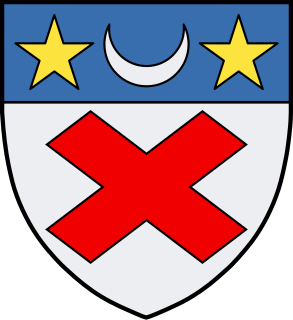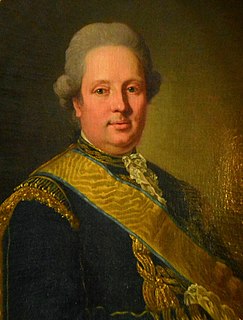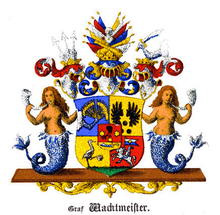
The Swedish nobility has historically been a legally and/or socially privileged class in Sweden, and part of the so-called frälse. The archaic term for nobility, frälse, also included the clergy, a classification defined by tax exemptions and representation in the diet. Today the nobility does not maintain its former privileges although family names, titles and coats of arms are still protected. The Swedish nobility consists of both "introduced" and "unintroduced" nobility, where the latter has not been formally "introduced" at the House of Nobility (Riddarhuset). The House of Nobility still maintains a fee for male members over the age of 18 for upkeep on pertinent buildings in Stockholm.

The Governor, Finnish: Maaherra, or Swedish: Landshövding, of a province of Finland headed the activities of the State Provincial Office, Finnish: Lääninhallitus, or Swedish: Länsstyrelse until the end of 2009, when the provinces were abolished. The governors were appointed by the President. Many former ministers including but not limited to Kaarlo Hillilä, Martti Miettunen, Hannele Pokka and Anneli Taina served as governors, since the post was regarded as prestigious enough for a retiring minister, but still politically neutral. The title of maaherra was also considered a personal title, such that once appointed, the title maaherra remained for life.
Lantmarskalk, was the title of one of the speakers of the Swedish Riksdag of the Estates, from 1627 to 1866 and of the Diet of Grand Duchy of Finland from 1809 to 1906. The Lantmarskalk was appointed by the Estate of the Nobles and also served as its speaker (talman). The Lantmarskalk should not be confused with the Riksmarsk or the Riksmarskalk, which were Great Officers of the Realm and royal appointees.

The House De la Gardie is the name of a distinguished Swedish noble family of French origin.

Countess Christina Augusta Löwenhielm, was a Swedish noblewoman and courtier. She is known for her love affair with the later Charles XIII of Sweden. She is also famous in history as one of "the three graces" of the Gustavian age; three ladies-in-waiting immortalized in the poem Gracernas döpelse by Johan Henric Kellgren, and known profiles of the epoch.
The Swedish comital family Adlercreutz is a part of the baronial family Adlercreutz. The general of the Swedish cavalry, cabinet minister and adjutant general Carl Johan Adlercreutz (1757-1815), who had been created a Swedish baron 30 August 1808, was created Swedish count in accordance with the 37th paragraph of the Swedish instrument of government of 1809, meaning only the head of the family possesses the title, 31 August 1814 in Uddevalla by King Charles XIII of Sweden, and was introduced at the Swedish house of the nobility 10 March 1814 as comital family number 125.

Hans Reinhold von Fersen was a Swedish count, politician and soldier. He served as lieutenant general from 1720 and as president of the Svea Court of Appeal from 1731.

Kulla Gunnarstorp Castle is a castle in Helsingborg Municipality, Scania, in southern Sweden. Kulla Gunnarstorp is located near the Öresund between the villages Hittarp and Domsten, about 10 kilometers north of Helsingborg.

Henrik af Trolle was a Swedish naval officer and commander of the Swedish Archipelago fleet. He was ennobled in 1772. He is considered to be one of the foremost administrators and developers of the Swedish Navy throughout the ages.
In Sweden, a person must have a surname and one or more given names. Two given names are common. Surnames are inherited from the parents, in the order of "same as elder sibling, if any; specified by parents; or mother's last name," while given names must be chosen by the parents at birth. The calling name by which the person is normally identified in conversation, is in Scandinavian countries one of the given names, not necessarily the first. In contexts where the full name is spelled out, the calling name is often indicated by an asterisk, by capital letters, or underlines or italics. For example, Märta Birgit* Nilsson is known as Birgit Nilsson, while Björn* Kristian Ulvaeus is known as Björn Ulvaeus.

The Chancellor of Justice is a Swedish government agency charged with representing the Government of Sweden in various legal matters as the government's ombudsman. The office was originally created through a decree issued by King Charles XII in 1713.
Hedvig Amalia Charlotta von Klinckowström was a Swedish countess, courtier and artist. She is known for her portraits and illustrations in drawings and miniatures on ivory, which are regarded to provide an historical valuable image of the contemporary Swedish aristocratic life.

Lovisa Sofia "Louise Sophie" von Fersen, née Piper, was a Swedish countess and courtier.

Gunnila Märta Louise Bernadotte, Countess of Wisborg was a Swedish and Luxembourgish noblewoman.
Count Carl von Fersen (1716-1786), was a Swedish courtier. He was an amateur singer and a leading member of the amateur theater of king Gustav III of Sweden. He was also the director of the Royal Swedish Opera in 1780–86, and a member of the Royal Swedish Academy of Music (1772).










